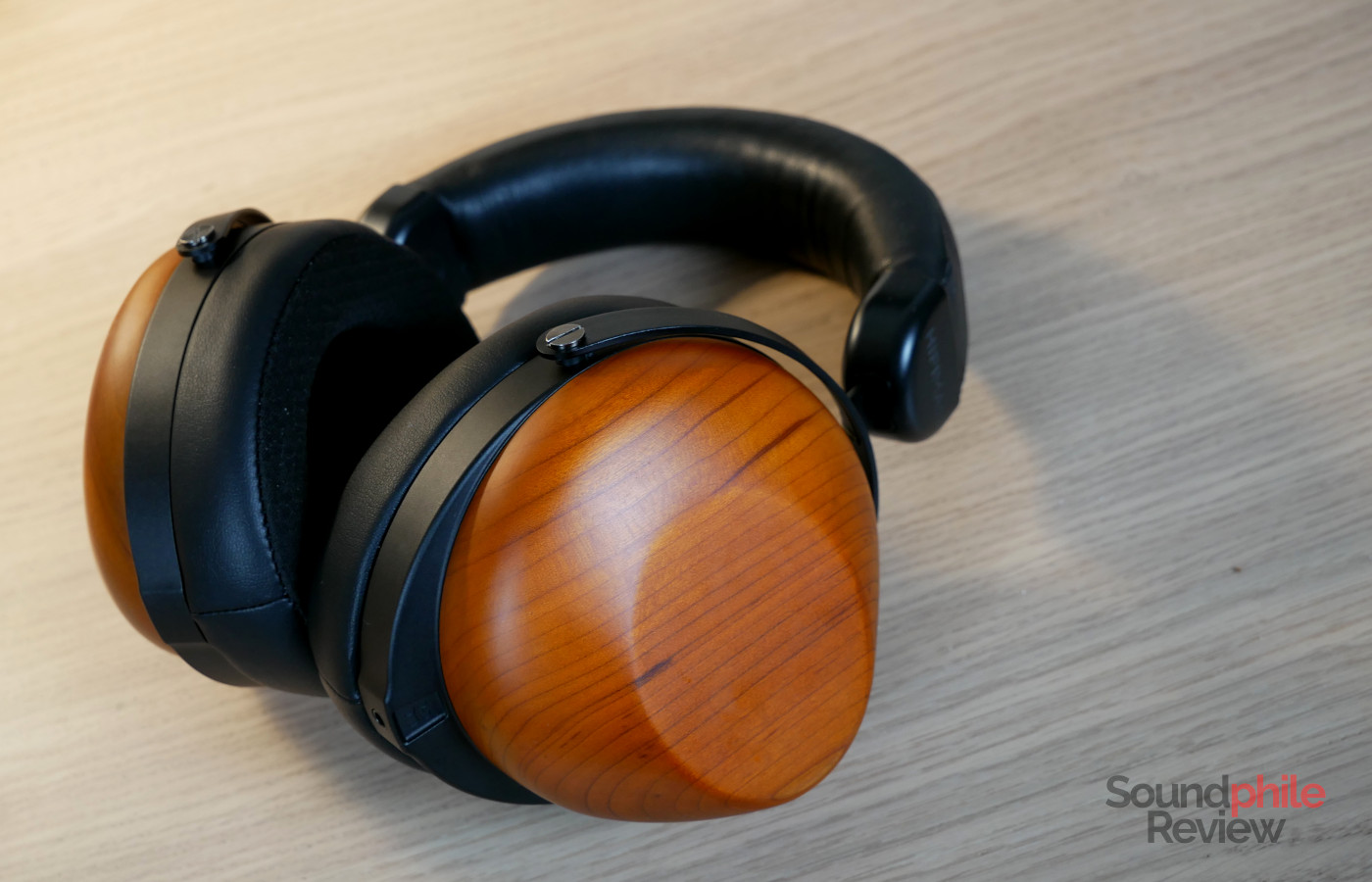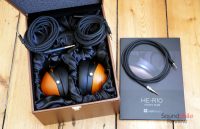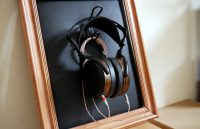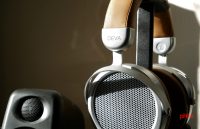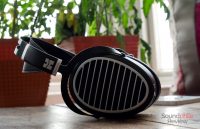Is it even possible to recreate a classic? They say we’re living in the most nostalgic of eras and the various remakes, reboots and sequels of old films and videogames is a proof of this. What I didn’t see coming was a remake of old headphones. The HiFiMAN HE-R10 are meant to be spiritual successors to the much-acclaimed Sony MDR-R10, produced between 1989 and the end of the ’90s. HiFiMAN saw that the patent for the Sony MDR-R10’s earcups had expired, so took the opportunity to launch their own twist on them: thus were born the HE-R10, which are offered in dynamic and planar variants. The one I’m reviewing is the planar one, also known as HE-R10P. I haven’t had the luck to try the Sony MDR-R10, but their fame as some of the best-sounding headphones of all times is very well known in the industry and the reason why HiFiMAN decided to pay this “tribute” to them: will the new HE-R10P be able to carry on the legacy of the famous Sony model?
Disclaimer: the unit used in this review was loaned to me by Mark at HiFiMAN Europe. The HE-R10P retail for ~$5,500.
TL;DR: recap
| Pros |
Cons |
| Gorgeous wood cups
Superlative imaging Open-back bass in a closed-back package Great resolution with lots of micro-details |
Unacceptable build quality for $5,500 headphones
Very bad comfort Weird signature |
Rating: 8/10
Packaging & Accessories
The HiFiMAN HE-R10P comes in a slightly more elaborate version of the brand’s usual packaging. The box is covered in what I assume is faux leather, with a large metal plate on the top that has the HiFiMAN logo and the “HE-R10” text etched on it. Inside are the headphones, three cables (all with TRRS 3.5 mm on one side, and then 3.5 mm TRS, 6.3 mm TRS and XLR4 on the other) and a manual, which is actually a hard-cover book.
Design & Comfort
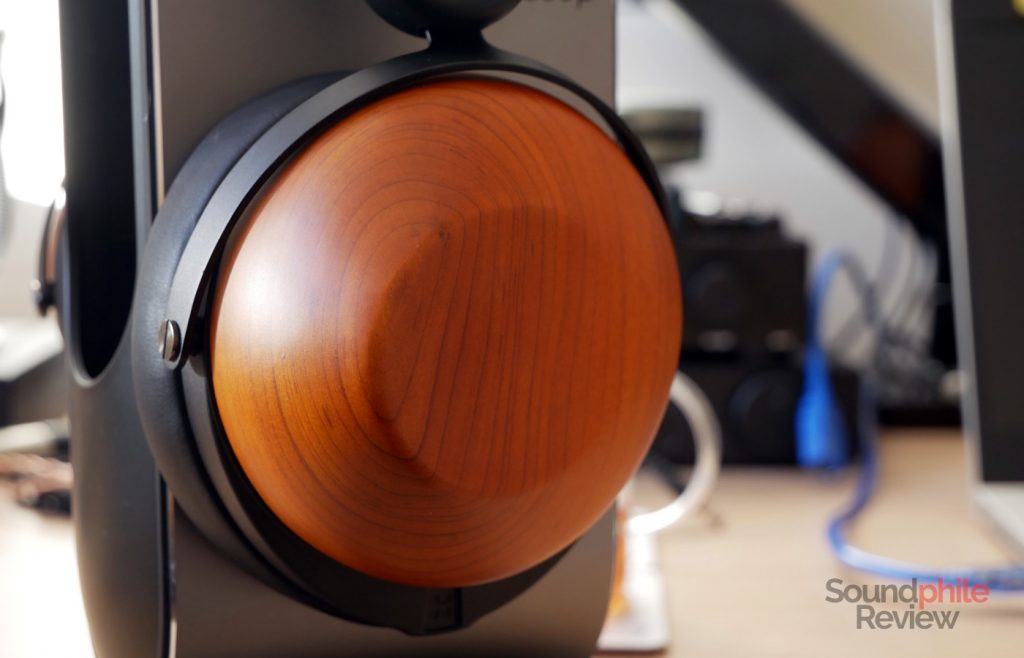
As I mentioned in the introduction, the design of the HiFiMAN HE-R10P is a direct derivation from that of the Sony MDR-R10. To put it more bluntly, HiFiMAN took the MDR-R10’s design when the patent on it expired. Although that’s fair from a legal standpoint, one wonders why HiFiMAN took the MDR-R10’s design without changing it and making it more unique to its brand. This is what has caused a lot of drama in the community around these headphones. I’ll leave it up to you to decide what to think of it from an ethical point of view as my opinion on the matter is just as good as yours.
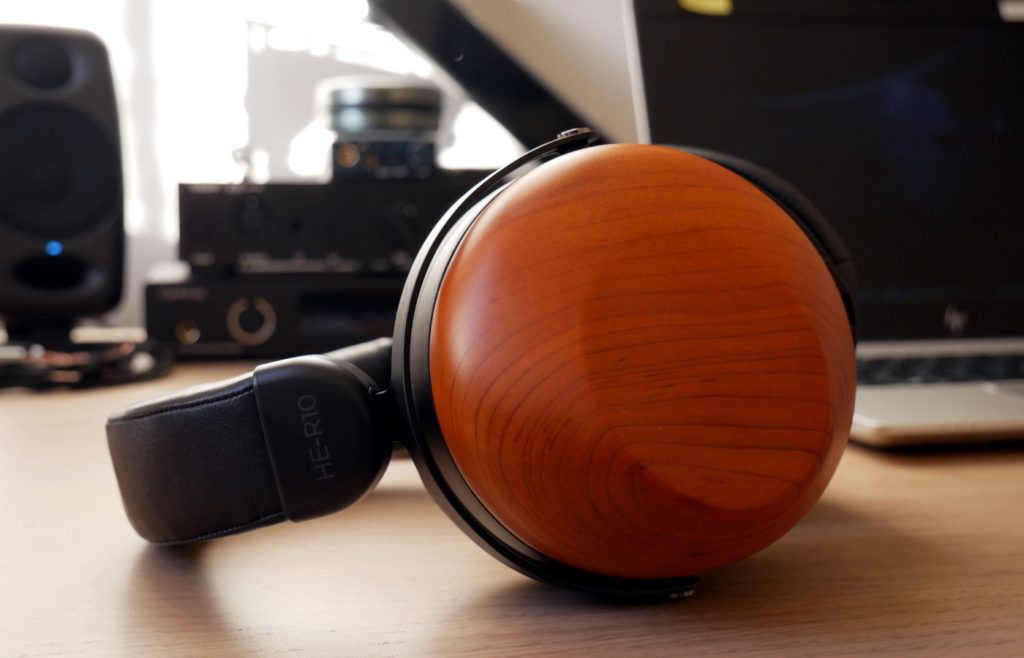
The wood used for the earcups is quite well finished, with a very smooth finish and a choice of the cutting angles that really exposes the various veins. I absolutely love the effect, it’s simply stunning. Now I have to admit I have a soft spot for wood, but these cups are just gorgeous. Come on, look at this. It’s stunning.
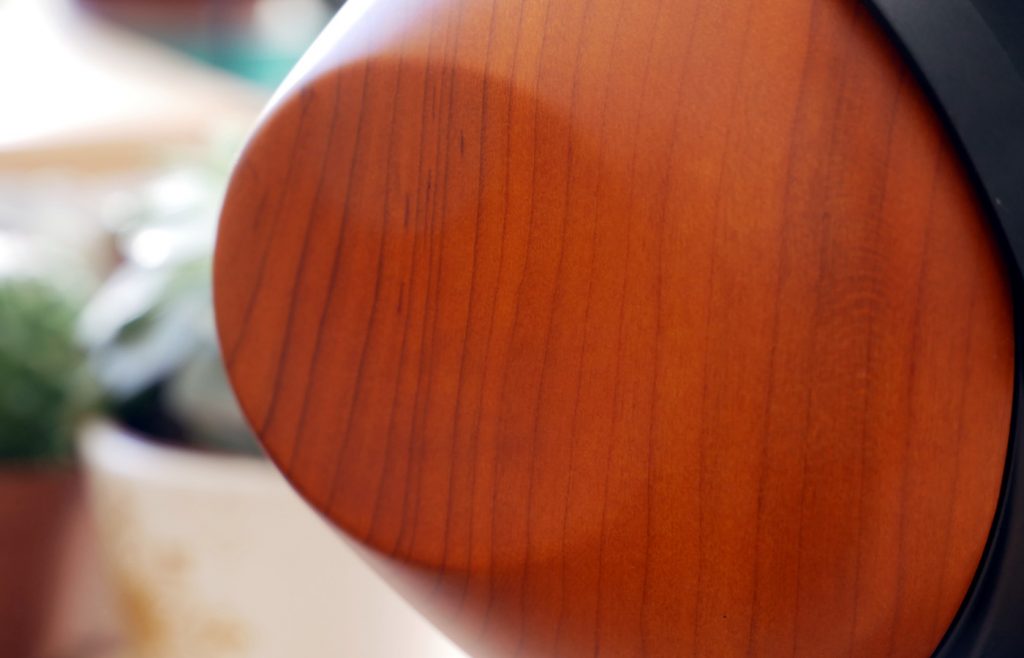
Build quality is honestly very disappointing for headphones that cost several months of most people’s salary. The headband is the same used for headphones such as the DEVA, which cost $300, and even the HE-400i 2020, which is the entry-level model at less than $200. That’s not okay, HiFiMAN, not in the slightest. Especially because this headband was evidently not designed for earcups as heavy as these and the sliding mechanism has failed on my unit, so the left earcup slides down when picking up the headphones by the headband. Definitely not what I expect out of $5500 headphones – heck, my HE-560 are incredibly better on this front and they have constantly been hammered with criticisms because of their build quality. The Meze 99 Classics, which cost ~$300, look and feel infinitely more premium.
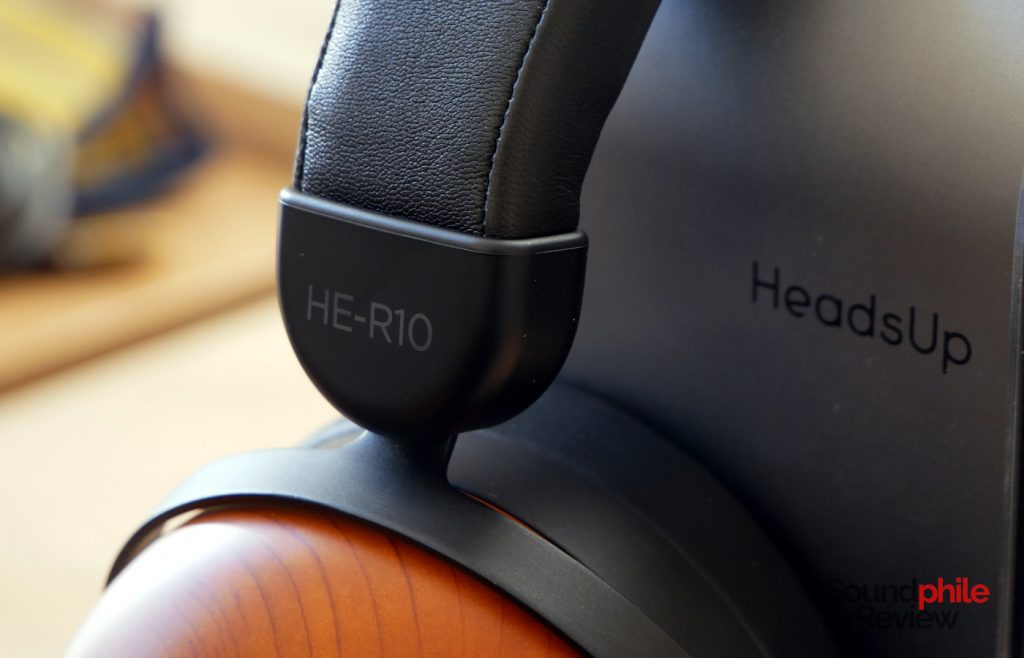
The lack of any clamping force also means that the significant weight of the HE-R10P is placed on the top of your head and if you, like me, have a sensitive scalp… then you’re royally screwed. Or at least you’re going to curse a lot due to the pain. The headband has poor padding, hard and unable to effectively distribute the large weight (460 g without cable!) as it is narrow, and this results in my scalp being quite unhappy about me wearing the headphones. A suspended headband design such as that used by the Susvara and Arya, or even just the Ananda or the Sundara, would have been much better: not only would it have not been cheap plastic, but it would have also better supported the weight of the headphones. HiFiMAN really needs to improve with this kind of things.
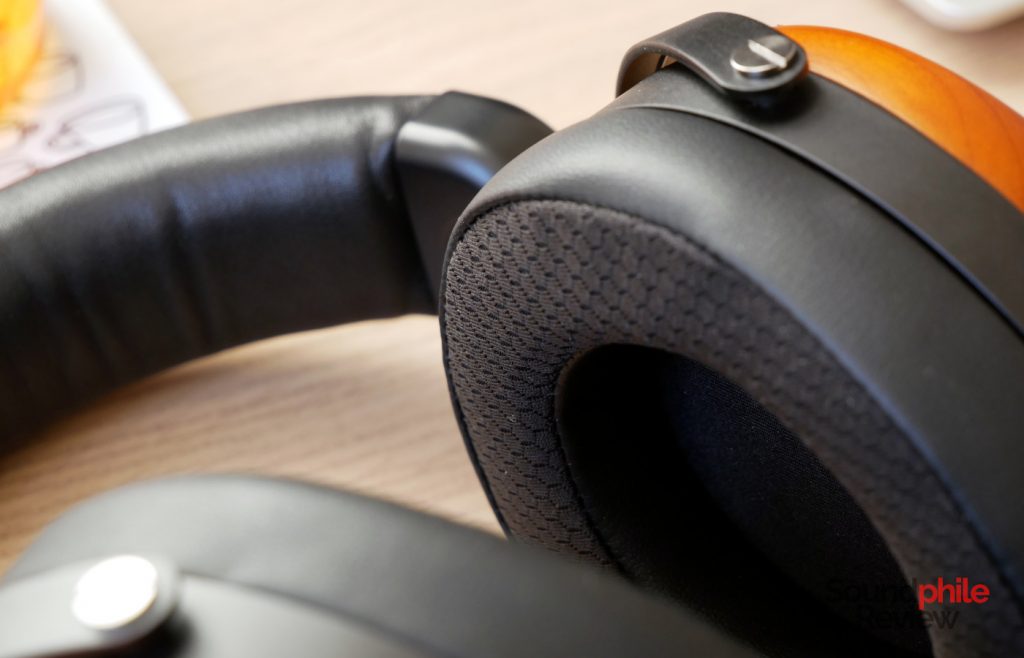
Another possible consequence of the poor clamping force is the relatively low passive isolation: I can hear what’s around me perfectly when listening to music at a comfortable (~65 dB) level. There is practically no difference between the HE-R10P and my HiFiMAN HE-560, except that the R10P leak less sound outside. Yes, less sound, as at high but still sane listening levels (~80 dB) the sound is absolutely audible from outside.
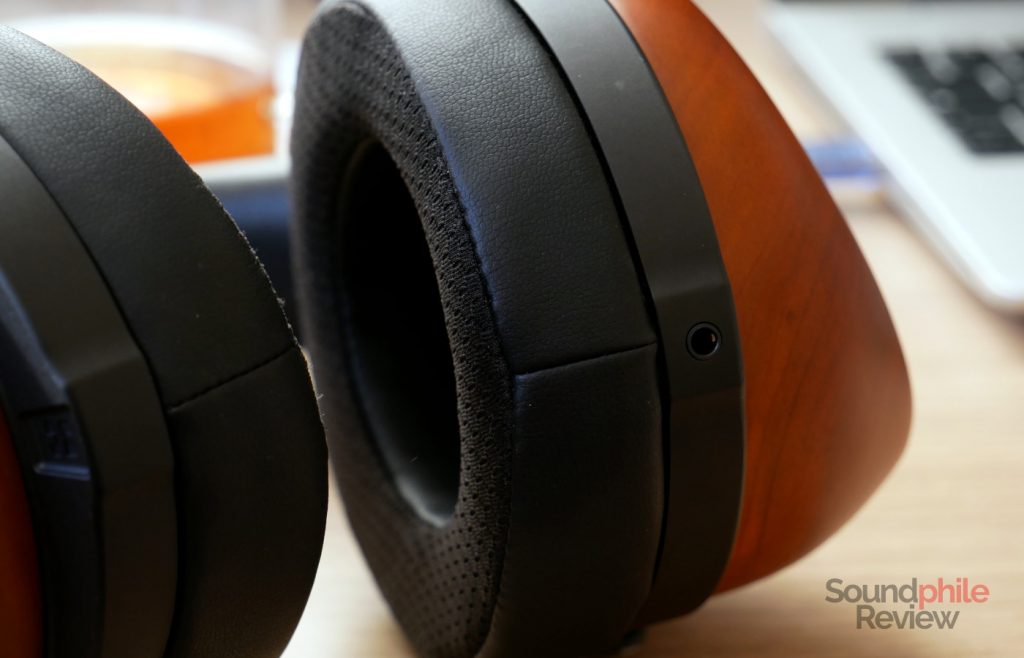
The earcups padding is attached to the headphones using Velcro, so it’s really easy to take it off and replace it (or just wash it). The paddings are of the slightly angled variety, so the back has a bit of additional padding in it; the difference is slight, though, and much less noticeable than with previous angled pads by HiFiMAN.
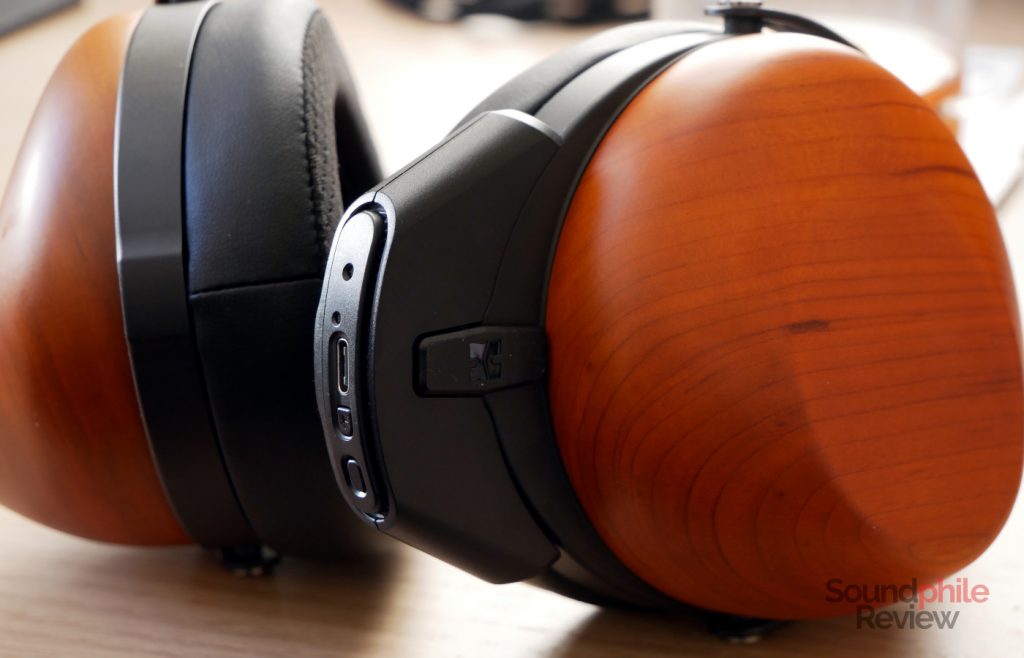
Now, the other thing the HE-R10P have in common with the DEVA is that they support the Bluemini device that can turn them into Bluetooth headphones. I tried to use one and it works quite well, even though you can definitely hear a background hiss.
The cables are finally enjoyable! By that I mean that they’re soft and easy to bend, with a fabric sleeve that makes them more resistant. They do look and feel like premium cables and I commend HiFiMAN for this improvement. The only complaint I might advance is the lack of a 2.5 mm or 4.4 mm option to take advantage of portable sources.
Sound & Specs
I tested the HiFiMAN HE-R10P using my trusty Topping DX7 connected with RCA cables to my Drop THX AAA 789 amplifier. The largest part of source files were FLACs in standard resolution.
HiFiMAN HE-R10P |
| Frequency response | 10 – 60,000 Hz |
| Impedance | 30 Ω |
| Sensitivity | 100 dB |
HiFiMAN is famous for having manufactured some of the hardest-to-drive headphones in history. Not so with the HE-R10P, which sound just fine even with portable amplifiers or – dare I say it – DAPs and even laptops and smartphones. Yes, the HE-R10P don’t require much power at all, thanks to their low impedance and high sensitivity. You don’t need a multi-thousand-quid setup to get the best out of them, really. A humble Topping A30 does the job quite nicely, despite all those who say “but you need more power!” as if physics was just an opinion (spoiler: it’s not!).
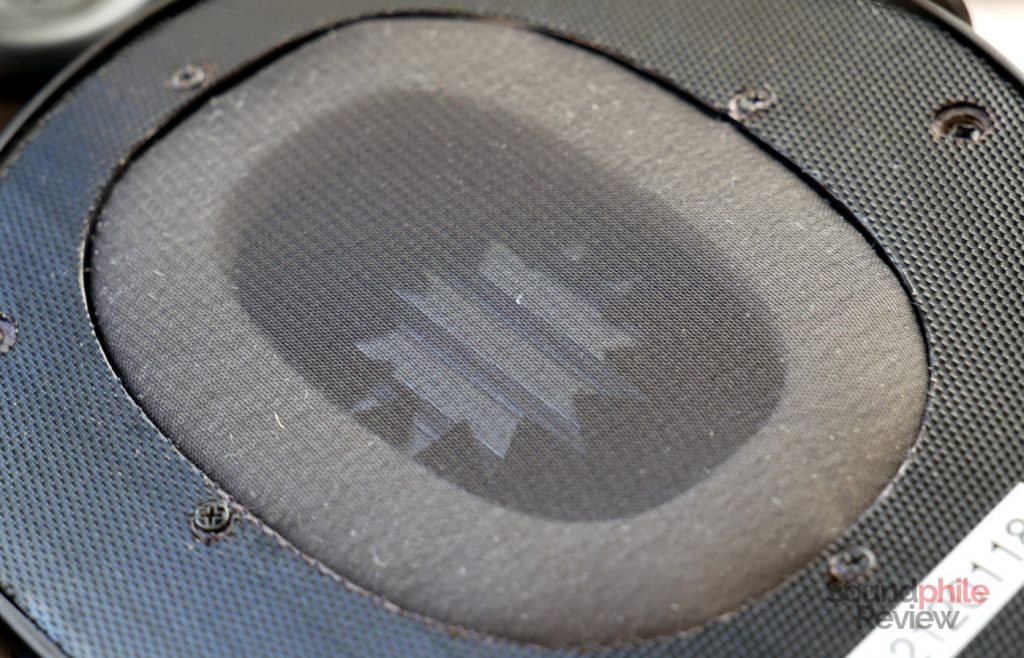
What I expected before trying the HE-R10P was a large, expansive soundstage that would rival open-back headphones. What I immediately realised is that there’s no such thing, however, as soundstage is actually not that wide. Yes, it does have a good amount of space in it, but it’s as if you were in a spacious living room, not in a concert hall. There’s a good amount of depth that also helps with imaging, but the HE-R10P are unmistakably closed-back in this regard: you definitely hear that the sound comes from headphones on your head (and the imposing weight and uncomfortable headband also do their best to remind you of this).
On the other hand, the imaging on the HE-R10P is absolutely insane! I’m not one to make bold, sensational claims, but the imaging really is in a league of its own. You feel entirely immersed in the sound, as if there was a 3D effect somewhere that places instruments not only at your sides and in front of you, but behind you as well – it’s a truly immersive experience that places you at the centre of the stage, and the effect is almost as if you were in your own private home theatre setup. It really stands apart.
It’s quite easy to tell the different instruments apart even in very complicated and layered tracks; not only that, but smaller details are also easy to spot even with instruments in the background. The HE-R10P do a wonderful job at allowing you to focus on specific instruments and in keeping every one of them apart from the others.
The HiFiMAN HE-R10P offers all of the features that people look for in planar bass: good linearity down to 20 Hz, physicality, speed and control. In fact there is a lot of bass if you listen to the right track: Solar Field’s Cobalt 2.5 has this massive wall of bass that is thrown at you with relentless force and the HE-R10P deliver this sensation really well. Due to the way the signature was done, though, in general I’d say that the HE-R10P’s bass is not so much as reserved, but more-or-less neutral: AC/DC’s Let me put my love into you is an example of this, as bass is undoubtedly there, but it’s left behind everything else. The influence of the closed earcups, if it’s even there, is barely noticeable: bass is really fast and lacks that kind of reverberation that you usually hear with closed-back headphones, having instead the agility and swiftness (and openness, in a sense) of open-back headphones. In Aes Dana’s wonderful Inks you can really feel the texture, so much so that you can almost touch it. HiFiMAN managed to get the best of both worlds in several ways , which is a great achievement requiring recognition.
Midrange is definitely the centrepiece of these headphones – it is the appetizer, first course, second course and dessert. The first thing you notice is the resolution: micro-details abound and you can really get into those even when you listen to background instruments, which shows how far the technical ability of these headphones can go. They’re so resolving they approach the power of electrostats, falling just short of them. The other thing that you notice is that mids are damn thin. There’s a decently large emphasis on the upper region which lends many instruments additional liveliness and fun, but which makes male voices sound as if they lacked body and female voices sound excessively breathy, as if there was excessive emphasis on the breathing nature of the voice. This makes voices unnatural and fatiguing in the long run as they sound a bit aggressive. This tuning is great for classic rock where electric guitars abound, as they get more bite, but I found it is just a bit too bright for basically anything else. To put this into perspective, the emphasis is more audible than it is on earphones such as the Tin HiFi T2 which are already considered quite bright.
Treble is superbly detailed and presents even micro-details in a way that makes them apparent and makes hearing them effortless, you don’t even have to concentrate to get them. And that’s honestly great, as it is the kind of thing I expect from high-end equipment: to basically do a bit of work for me to be able to better appreciate the music. The HE-R10P have a very good extension that lends their treble a good sense of air and openness. It’s really a light treble, as it is clearly audible and it’s not fatiguing at all, adding lightness and ease to the sound. There’s one issue, though: there is a dip around 5 kHz that make violins, among other instruments that operate in the lower area, sound less convincing and present than they should, and this is true for all instruments whose harmonics are in this area. A boost by 3 dB makes the situation much better and restores the balance, making voices more realistic as well. Cymbals are especially impacted, as they sound less incisive and defined than they should. There’s then a small peak around 10 kHz which can become fatiguing with the right track: in Azymuth’s famous Jazz Carnival the synth harmonics at the end of the track are boosted over the comfort level and become harsh.
Mind you, this is nitpicking, but with headphones in this price range I expect them not to have flaws like this. It’s not even a matter of what I personally like or not: in fact I really enjoy the R-10P, as they are easily among the most interesting headphones I’ve tried. I’ve even tried using them for gaming (heresy, I know) and they are just out of this world for that due to their wonderful imaging. But the thing I need to ask myself when I review products is: what is their price/performance ratio? That ratio is influenced by the flaws of the headphones and if the price is really high, then it’s easy to get a ratio that’s not favourable. With a higher price come greater responsibilities, to paraphrase a famous spidery quote, so even smaller flaws need to be reported, discussed and judged.
Final Thoughts
It’s quite rare for a product to generate a high amount of controversy before even being launched. However that’s exactly what has happened with the HiFiMAN HE-R10P. Their design, which was taken as-is from the Sony R10, is what caused all this controversy: legally it’s all good, since the patents covering the design expired, but from a broader moral perspective? It’s a much less clear-cut situation. Now, if I were Fang Bian, as an enthusiast with the ability to reproduce the design of a highly sought-after product, I would probably go with it… but I would also include my own touch, as that’s the difference between a copycat and a tribute. As a musical metaphor, it’s like publishing a cover of a famous song making it exactly identical: okay, that’s actually good, but where’s your personal touch? I would have loved to see more HiFiMAN touches on this, beyond the headband – which is ironically the single largest issue with how the headphones are built. This is my opinion which, again, is just as good as yours, so I encourage you to share your own.
All considered, the HE-R10P deserve an 8/10 mark. That’s because their build quality is not up to standards, there is a large dip around 5 kHz and a spike around 10 kHz, the soundstage is small, and the tuning is only really good for some specific genres: those wouldn’t be big issues on $500 headphones, but on $5,500 ones – eleven times as much? I expect issues like these not to be there or, if they are, to be smaller.
Don’t get me wrong, the HiFiMAN HE-R10P have a lot going for them: their imaging is absolutely superb, their resolution displays even micro-details effortlessly, the bass hits just about the right spot, the speed and physicality of the driver are great. All of these are the reason why I decided to give them 8/10, despite their limitations. Had they not sounded so good, I’m not sure I’d have given them such a mark – even though I can’t help but put the spotlight on the fact that you really want a higher mark for a headphone that costs this much.
If you really like genres such as rock, where the emphasis on the midrange can make a good difference, and if you are a fan of the earcups, the HiFiMAN HE-R10P are surely a very interesting headphone. But, exactly because they are top-of-the-line headphones, their flaws can’t be ignored and require careful consideration.

